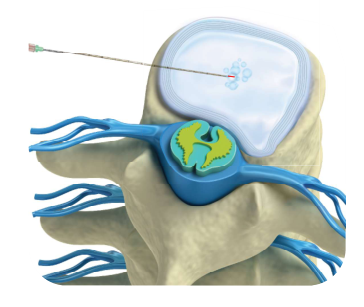PLDD
Percutaneous laser disc decompression (PLDD) is a type of surgery in which a laser probe is inserted into the intervertebral disc space and laser energy applied for achieving decompression and neuromodulation thereby relieving the pain. PLDD is a minimally invasive procedure that falls into the category of percutaneous intervertebral surgeries with the aim to significantly reduce the patient’s pain and recover neurological deficit. It is performed under local anesthesia. By a specially designed laser, with a coefficient of absorbing energy adjusted for soft discus tissue, specific amount of heat is sent to achieve the evaporation of the water from the disc without additional thermal damage thus achieving decompression and creation of a stable intradiscal scar that will prevent herniation from reoccurring.


DOD Laser is based on the absorption characteristics of both 980 nm and 1470 nm wavelengths, which, thanks to its outstanding interaction in water and haemoglobin and moderate penetration depth into disc tissue, enables procedures to be carried out safely and accurately, especially in proximity odelicate anatomical structures. Microsurgical precision is guaranteed by the technical characteristics of the special PLDD laser fibers, which allow for surgical effectiveness, ease of handling, and maximum safety. The use of flexible tactile laser fibers with core diameters of 360 micron in combination with the microsurgical PLDD enables a very precise and accurate access and intervention to sensitive areas like the cervical and lumbar disc zones on the basis of clinical therapeutic needs.PLDD laser treatments are mostly used after non-successful conventional therapeutic options under strict MRT / CT control.
Advantage
No soft tissue injury
No risk of epidural fibrosis or scarring
No extensive hospitalization (on outpatient basis possible)
No general anesthesia, local anesthesia with mild sedation
Minimal recovery time Lower costs
Previous:No More
Next:No More
